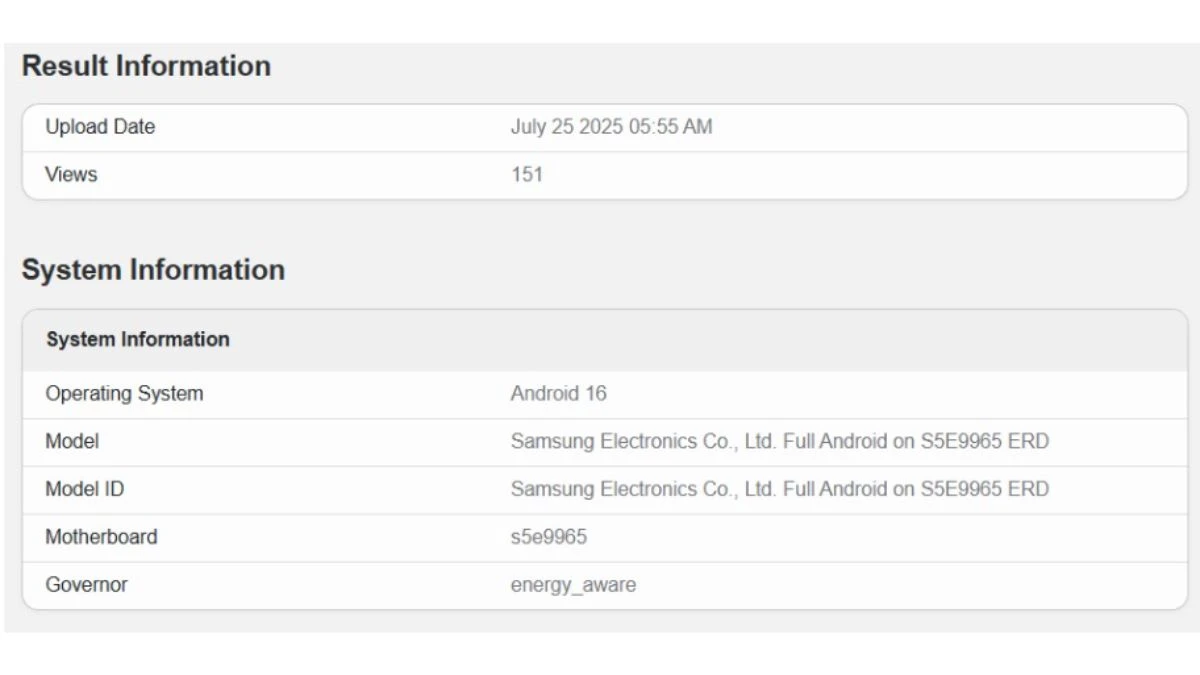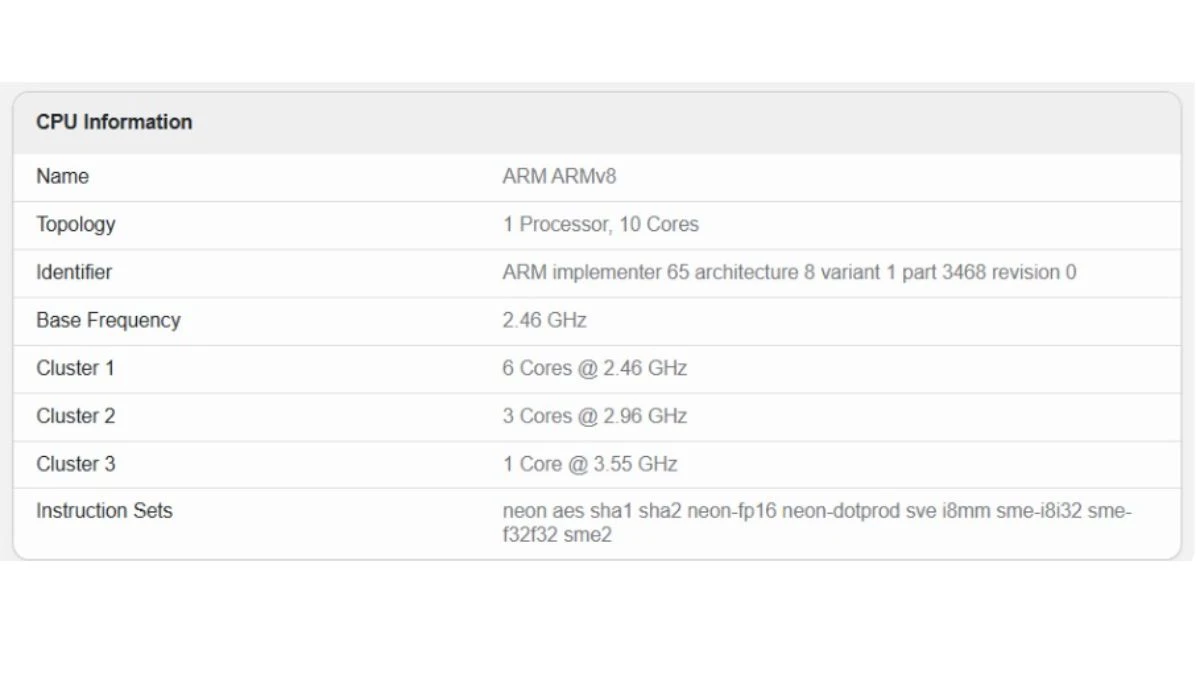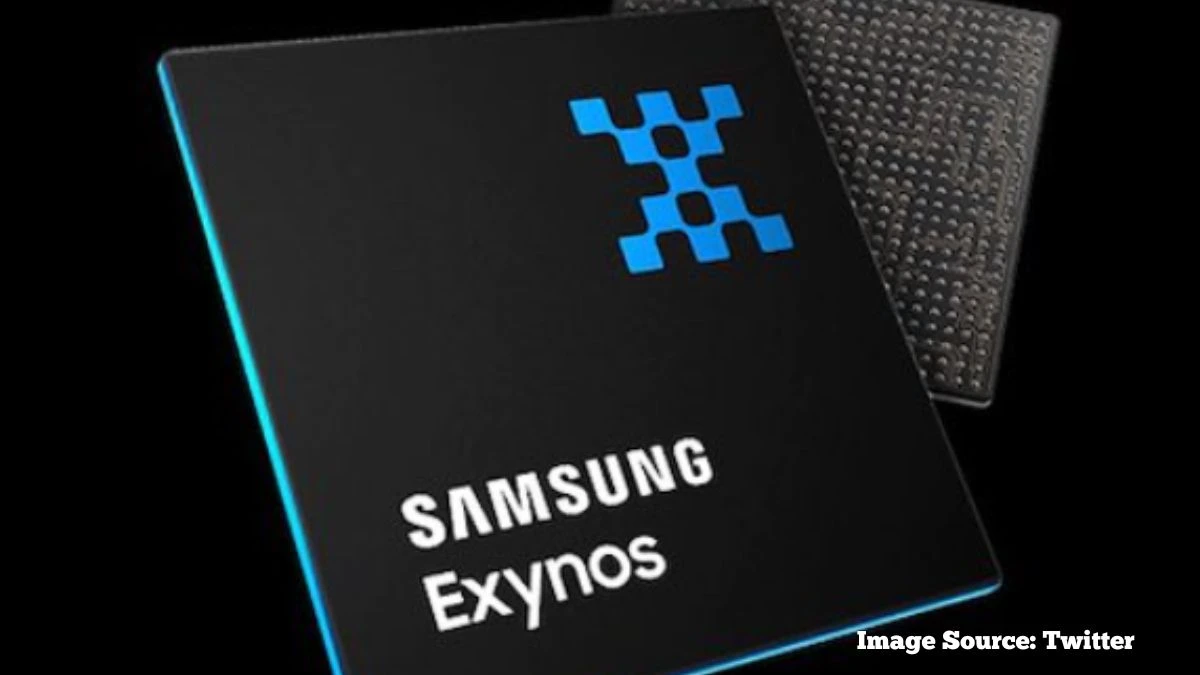Samsung's Exynos 2600 SoC
Samsung’s semiconductor division has rolled out new prototypes for the Exynos 2600 system-on-chip, aiming to reclaim ground in the flagship smartphone world. After production issues sidelined the previous Exynos 2500, the Exynos 2600 is now at the center of attention, especially with its intended debut in the Galaxy S26 series.
This chip’s development comes at a time when rival chips from Qualcomm and MediaTek continue to push boundaries in performance and efficiency.
Samsung's Exynos 2600 Soc listed on Geekbench
https://www.instagram.com/p/DMjoQteJY2A/
What’s New in the Exynos 2600?
Samsung has opted for a deca-core (10-core) setup this time, using a 1+3+6 configuration: one prime core clocked at 3.55GHz, three performance cores at 2.96GHz, and six efficiency cores at 2.46GHz.
This structure is meant to strike a balance between raw performance and keeping power drain in check. For graphics, the Exynos 2600 brings the Xclipse 960 GPU, borrowing from AMD’s RDNA architecture.
This chip is manufactured on Samsung’s 2nm SF2 Gate All Around (GAA) node, which should allow for higher performance and better power efficiency compared to the old 3nm process.
"Samsung might use the Exynos 2600 chipset on the base version of the Galaxy 26 in Europe and other “global markets”. The company will return to the chipset strategy used for the Galaxy S24 Series and it’ll have different versions of its flagship phones. The S26 Ultra and the “major market” versions of the base S26 models are rumored to feature Qualcomm’s Snapdragon 8 Elite Gen 2 chip" - according to phonearena
https://www.instagram.com/p/DJ7fa22uZbS/?img_index=1
Benchmarks and Early Performance
On Geekbench, the chip posted a single-core score of 2,155 and a multi-core score of 7,788. These numbers show improvement over the Exynos 2500 and put it in close competition with flagship processors from Apple and Qualcomm—though the Galaxy Z Fold7’s Snapdragon 8 Elite scored notably higher in some tests.
For graphics, the Xclipse 960 GPU clocked a 3,135 score in the 3DMark Steel Nomad Light test, reportedly about 15% higher than the Snapdragon 8 Elite’s results.
Nevertheless, these were demos run on cooler test benches rather than in retail smartphones, so real-world performance may differ once thermal and battery constraints come into play.
Will Every S26 Get This Chip?
History shows Samsung sometimes splits its chip supply—Snapdragon for some markets, Exynos for others. This strategy looks set to continue with the S26 series.
Reports indicate that only base S26 models in select regions will run on Exynos 2600, while premium Ultra and some Edge variants will get the latest Snapdragon.
This move is partly due to yield rates and supply limitations, plus market demand preferences in the US and other regions.
Production and What’s Next
Yield concerns with earlier chips pushed Samsung’s foundry to make Exynos 2600 production a top priority, bringing together both the design (LSI) and manufacturing (Foundry) teams.
The 2nm SF2 node is reportedly showing higher yields than last year’s attempt at 3nm, letting Samsung ramp up with fewer worries about defective chips.
Launch plans center around the Galaxy S26, expected in early 2026. In the background, both Qualcomm and MediaTek will be looking to outpace whatever advantage Exynos 2600 brings when it arrives.
Exynos 2600 is still being tested and optimized



Source: Geekbench
The Exynos 2600 marks a critical junction for Samsung’s in-house processor ambitions. With improved architecture, competitive benchmark scores, and a big bet on 2nm fabrication, Samsung is hoping the new silicon can regain trust from critics and enthusiasts weary from past setbacks.
As these chips make their way into actual phones and more consumer-facing reviews surface, the true picture of the Exynos 2600’s prowess—heat, battery life, and day-to-day use—will become clearer.
For now, Samsung seems determined to stay in the flagship chip race, not just as a participant, but as a contender to watch.






